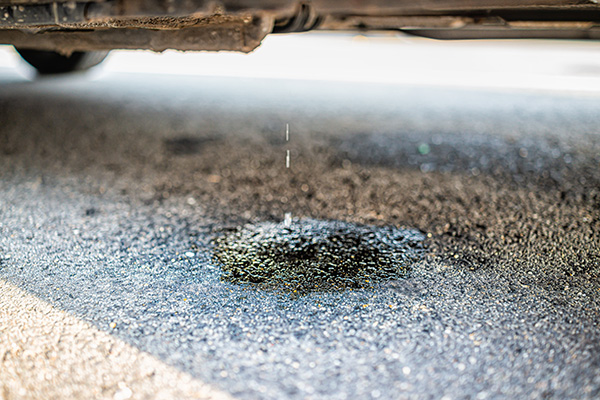
Finding a puddle under your car can be an alarming experience. But not all leaks are cause for panic, and some are more urgent than others. The good news is that your car gives you clues about where the leak is coming from. One of the most effective ways to identify fluid leaks is by examining the color, texture, and even the odor.
Knowing the type of fluid leaking can help you communicate clearly with your mechanic and potentially prevent a minor issue from escalating into a major repair. Let’s break down the common fluids your vehicle relies on and how to identify them.
Engine Oil Leaks
Engine oil is one of the most common leaks you’ll encounter. It typically appears as a dark brown or black puddle beneath the engine area. The consistency is smooth and slick to the touch, and the smell may be faintly burnt or oily.
Oil leaks can originate from the oil pan gasket, valve cover gasket, or a deteriorated oil filter seal. These leaks can grow over time, so it’s best to address them early. Ignoring an oil leak can lead to low oil levels, which, in turn, puts your engine at risk of serious damage.
Transmission Fluid
If you notice a reddish or brownish fluid with a slightly sweet or burnt smell, it’s likely transmission fluid. This leak often appears in the middle of the car, especially near the transmission pan.
Transmission fluid is essential for smooth shifting and lubricating the internal components of the transmission. A leak can lead to gear slippage, overheating, or even complete failure if left unchecked. It’s a good idea to check your fluid levels if you suspect a leak and get your car inspected as soon as possible.
Coolant (Antifreeze)
Coolant is usually bright green, pink, orange, or even blue, depending on the type used. It often has a sweet smell, and the leak typically appears near the front of the vehicle, usually under the radiator or engine bay.
Coolant leaks can originate from a cracked hose, radiator damage, or a faulty water pump. These leaks can cause your engine to overheat quickly, especially in hot Texas weather. If you notice your temperature gauge creeping up or steam coming from the hood, it’s time to stop driving and call for help.
Brake Fluid
Brake fluid is a clear to yellowish liquid with a slippery texture and a sharp chemical smell. You may find it near the wheels or under the master cylinder area. This is one of the most serious leaks your vehicle can have.
Brake fluid is part of a closed hydraulic system, and losing it compromises your ability to stop safely. If your brake pedal feels spongy or the warning light comes on, you should get your car to a repair shop immediately.
Power Steering Fluid
This fluid is often red, pink, or light brown and has a smell similar to transmission fluid. It may leak near the front of the engine bay or underneath the steering system.
A loss of power steering fluid can make your steering feel heavy or unresponsive, especially at lower speeds. Catching this early can prevent damage to the steering rack or pump.
Windshield Washer Fluid
Usually blue or green, windshield washer fluid is thin, watery, and easy to identify. It typically leaks near the front bumper area and has a mild chemical odor. While not dangerous, it’s still worth fixing to maintain clear visibility when driving in dusty or wet conditions.
Fuel Leaks
Gasoline has a very distinct and strong smell that most drivers can recognize immediately. If you spot a clear or light amber fluid and smell fuel, avoid starting the car and seek professional help. A fuel leak poses a significant safety hazard due to its flammability and should be addressed promptly.
Diesel fuel leaks have a similar oily texture but a slightly different, heavier smell. If you drive a diesel vehicle, it’s still just as important to address leaks promptly.
When in Doubt, Let a Professional Take a Look
While it’s helpful to understand what you’re seeing on your driveway or garage floor, not every leak can be diagnosed from the outside. Some issues may involve multiple systems, or the leak may be traveling along other parts before reaching the ground. In many cases, a small leak can indicate a much larger issue hidden from view.
Regular inspections can catch these problems before they grow. If you ever feel unsure, it’s always better to bring your vehicle in for a thorough check than to take a chance.
Need Help Identifying a Leak? Visit Strande’s Garage in Denton, TX
At Strande’s Garage in Denton, TX, we’ve seen just about every kind of fluid leak there is. Whether you’re dealing with a suspicious spot in your driveway or a warning light on your dash, our team can quickly diagnose the issue and get you back on the road safely.
Stop by Strande’s Garage today for a full inspection. We’ll identify the leak, explain the cause, and handle the necessary repairs so you can drive with confidence—no puddles, no surprises.